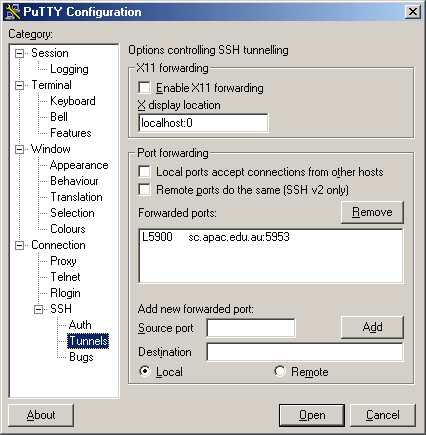

- #INSTALL VNC THROUGH SSH HOW TO#
- #INSTALL VNC THROUGH SSH INSTALL#
- #INSTALL VNC THROUGH SSH ZIP FILE#
If you happen to forget your password, you can remove this ~/.vnc/passwd file and vncserver will create a new one the next time you run it. This password is stored in a very weakly encrypted format in your ~/.vnc/passwd file so someone getting read access to that file could easily determine your password. do not use your IU network ID passphrase).

You must NOT use a password here that you are using anywhere else (ie. The first time you run vncserver, it will prompt you for an access password that you will need when you connect from your vnc client. Starting applications specified in /u/shei/.vnc/xstartup You will require a password to access your desktops. Start the VNC Server - You can now start the VNC server on the remote linux system by running vncserver as follows:
#INSTALL VNC THROUGH SSH ZIP FILE#
Download the zip file and unzip it anywhere you want but the common convention is to put all packages under C:\Program Files\ (or C:\Program Files (x86)\, if you are using a 64-bit Windows).

#INSTALL VNC THROUGH SSH INSTALL#
Install a VNC Client - There are several VNC clients programs available for Windows but we recommend using ssvnc which can be downloaded from.We recommend that you download and install the Windows Installer which will be named something like. Putty is a very popular one and you can download it from the Putty download site. Install PuTTY - On your Windows system, you will need to install an SSH client program.Example 1: Windows Client -> Linux Serverįor clarity, we will use as the server on which you will start your VNC server. In these examples, we will use ssh tunneling for security.
#INSTALL VNC THROUGH SSH HOW TO#
Since you can run X clients (such as xterm, emacs, or eclipse) within the VNC desktop, you can then display them from your machine.īelow are some examples of how to use VNC. There are VNC client and server programs available for most platforms, including Linux, Windows, or MacOS. Using VNC, you can create a virtual desktop on a remote system and then use the VNC client program running on your machine to display this desktop. VNC (Virtual Network Computing) is a free product that we recommend.


 0 kommentar(er)
0 kommentar(er)
